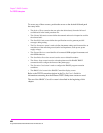
419
Chapter 7, IBASIC Controller
The TESTS Subsystem
The TESTS Subsystem
The Test Set makes available to the user an automated user-interface which has
been specifically designed for radio test. One of the primary problems associated
with automated radio testing is the need to rapidly configure the software with the
information needed to test a specific type of radio. Information such as, test
frequencies/channels, test specifications, test parameters, test conditions and pass/
fail limits. Most often the test(s) and test procedure(s) used to test a class of radio
(AM, FM, AMPS, TACS, TDMA, CDMA, etc.) are defined by an industry
standard and are used to test all radio types within that class. However, for a
specific radio type, the test(s) may remain the same but the information needed to
test the radio changes. For example, a portable hand-held may have different
transmit power levels than a mobile - the RF power test is the same but the power
levels, supply voltages, pass/fail limits etc. can be different.
There are two approaches which can be used to provide the software with the
information needed to test a radio: a) hardcode the information directly into the
software, or b) store the information outside the program code itself and make it
available to the software as needed. Hardcoding the information into the software
has several serious drawbacks: changing the information is difficult and the
software becomes specific to that radio type. Storing the information outside the
program code and making it available to the software as needed overcomes both
of these problems, that is - the information is easy to change and the software is
not specific to a particular type of radio.
The Test Set’s automated user-interface was designed using this approach. Agilent
Technologies has developed software specifically designed to run on the Test Set.
The Agilent 11807 Radio Test Software provides the user with a library of
industry standard tests. All radio specific information has been removed from the
software. The information needed to test a specific type of radio is available to the
user through the TESTS Subsystem. To generate, change and maintain this radio
specific information the TESTS Subsystem provides menu driven input screens to
define specifications, parameters, test sequencing and system configuration for a
particular radio type.


















